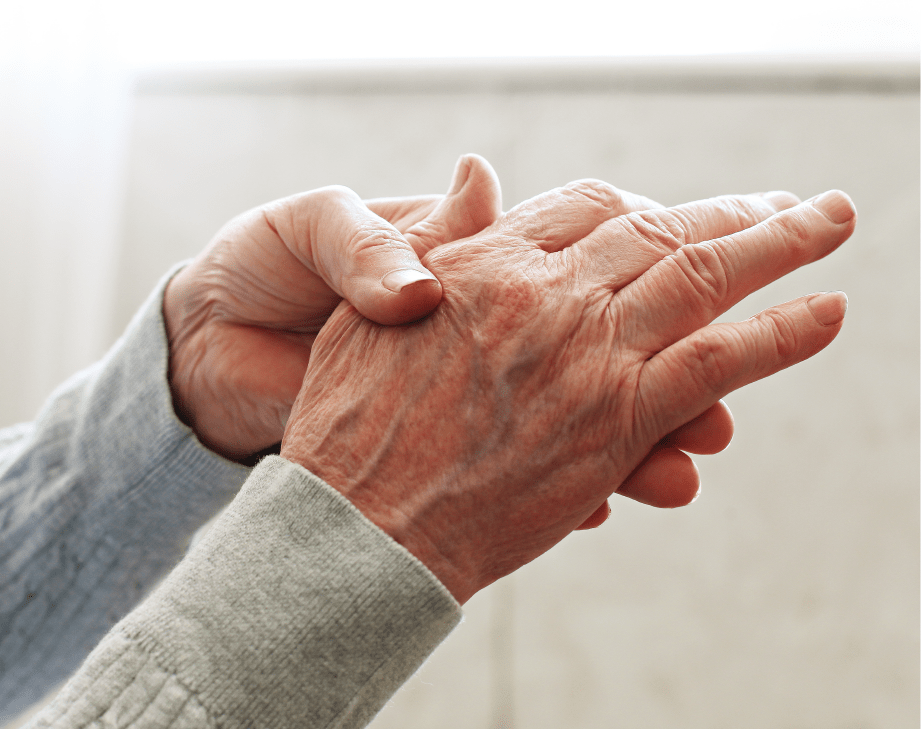

Health Management Insight: Arthritis
Arthritis is a very common medical condition which causes pain and inflammation in joints, and can also lead to stiffness, restricted movement and loss of strength.
It can have varying presentations depending on the type, severity and joints affected.
More than 10 million people of all ages suffer from arthritis or similar joint conditions in the UK.
Condition overview
Osteoarthritis
A degenerative process most-often seen in those aged over 40, osteoarthritis initially affects the smooth cartilage lining of the joint - making movement more difficult and leading to pain and stiffness.
As the cartilage lining thins out, the tendons and ligaments have to work harder - which can cause swelling and the formation of bony spurs known as osteophytes.
Severe cartilage loss can lead to bone rubbing on bone, which can change the shape of the joint and force the bones out of their normal position.
Hands, spines, knees and hips are the most-commonly affected joints.
Rheumatoid arthritis
Often starting between the age of 40 and 50, rheumatoid arthritis affects three times as many women as it does men.
It sees the body's immune system targeting affected joints, leading to pain and swelling.
The outer covering of the joint is affected first, then it can spread further, leading to more swelling and a change in the joint's shape. The bone and cartilage can break down as a result.
Sufferers can also develop problems with other tissues and organs in their body.
Symptoms
In addition to those already mentioned, the following symptoms are associated with arthritis and should prompt sufferers to seek a specific diagnosis.
- Joint pain, tenderness and stiffness
- Inflammation in and around the joints
- Restricted movement of the joints
- Warm red skin over the affected joint
- Weakness and muscle wasting
Treatment
Arthritis cannot be cured (although some forms may spontaneously resolve), but the symptoms can be managed and there are numerous treatments which can often slow the condition down.
The main aim of treatment is to reduce symptoms, optimise function, and in some case, minimise progression.
Osteoarthritis
While osteoarthritis cannot be cured, it doesn’t necessarily get worse over time – and can often be managed effectively with various interventions, including:
- Lifestyle measures – such as exercising regularly and ensuring an optimal weight
- Medication – to relieve pain
- Supportive therapies – to make everyday activities easier
Surgery can also be carried out in some cases, and might involve joint replacement, joint fusing or adding/removing bone from a joint.
Rheumatoid arthritis
Treatments for rheumatoid arthritis can help reduce inflammation in the joints, relieve pain, prevent or slow down joint damage, reduce disability and enable those affected to be as active as possible.
Although there's no cure for rheumatoid arthritis, early treatment and support (including medicine, lifestyle changes, supportive treatments and surgery) can reduce the risk of joint damage and limit the impact of the condition.
Prognosis
Living with arthritis can be painful and limiting in some aspects, but there are a range of measure sufferers can take to minimise the effects of the condition and live a healthy life.
Chief among these are lifestyle measures, such as:
- Healthy eating, with a balanced diet including all five food groups
- Losing weight, if overweight
- Exercise to improve strength, boost energy and increase range of movement
- Joint care, using coping techniques to protect vulnerable areas
- Adaptations at home or work to make certain tasks easier, e.g. long-handled tools or levers on taps
Occupational therapy may also be provided and advice can be given on equipment to enable sufferers to live independently.



